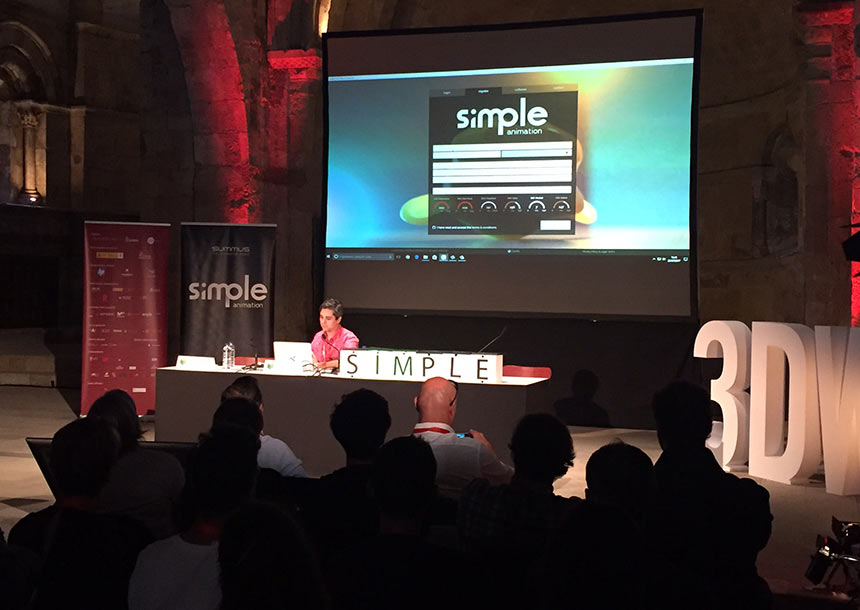

Summus Render Jumping Into Virtual Animation Studio Space With Simple Animation
A new entrant in the field of cloud-based animation platforms is setting its sights on the emerging market inhabited by players such as Artella, Nimble Collective, and Foundry’s Elara.
Simple Animation, from Madrid-based render farm provider Summus Render, is angling itself as a virtual animation studio. It intends to incorporate all the necessary architecture, storage, and cloud rendering capabilities to allow artists to work from any remote location.
Summus unveiled Simple Animation at SIGGRAPH 2017 in Los Angeles earlier this year, and presented to the Spanish market today at 3D Wire in Segovia, Spain.
The virtual animation studio space
Simple Animation will join a number of companies already looking to take advantage of cloud rendering and virtual collaboration on animation projects.
Nimble Collective, for example, has been pushing its virtual studio as one which is done entirely through a web browser (ie. no local software or storage is required). So far, the company has showcased a couple of pilot projects made using Nimble Collective, which are designed to test and develop the platform further.

Artella has perhaps built up a larger userbase, and has showcased multiple projects done with the platform, including Duel released as the signal film for CTN Animation Expo in 2016. Artella remains in beta; as well as being a platform to set up a virtual animation studio, the intention is also to establish a community and network of animation collaborators.
The Foundry’s Elara is a cloud-based platform targeting the post-production industry that combines storage infrastructure with applications like Nuke, V-Ray, and Houdini.
Several other options for working virtually in animation also exist, from simply sharing and synchronizing files via Dropbox or Google Drive, collaborating across Blender’s Blender Cloud option, or utilizing cloud rendering services such as Fox Renderfarm, Zync, and many others. Of course, these require local storage and some kind of pipeline, whereas the aim of virtual animation studios is to handle that side of things for you.
Where Simple Animation fits in
Summus enters the field as a trusted name in cloud-based production. Its render farms have been used for a number of animated films and visual effects projects, including Final Fantasy XV (2016), Tadeo Jones 2: The Secret of King Midas (2017), and Animal Crackers (2017).
With Simple, Summus aims to provide a scalable, all-in-one solution that allows producers of all sizes to effortlessly set up virtual workstations anywhere in the world. A key part of its solution is, like Nimble Collective and Artella, it enables for the animation process to be done via a custom interface.
Essentially, users log in and view the relevant project via a virtual remote workstation. The projects are managed via Autodesk’s project management tool, Shotgun, to co-ordinate activities of users around the world. A demo of how Simple works can be viewed below:
To launch a project in Simple Animation, a producer will be able to define the number of workstations, storage, number of software licenses, and roles and permissions. The cost is based on a pay-per-use plan, that is, the user pays depending on the amount of time used.
The platform should benefit everyone from freelancers who wish to work remotely to large producers who often struggle with building custom pipelines for each new production, and occasionally have to deal with multiple productions running simultaneously. Simple eliminates the need for costly workstation infrastructure, data management, and IT staff, and building software packages for a production is intended to be as easy as dragging-and-dropping icons.
Simple runs on IBM’s Bluemix cloud platform. The service is delocalized and deployed on data centers around the globe, including Madrid and Frankfurt (Europe), Dallas (USA), Sao Paulo (Brazil), Hong Kong, and Melbourne (Australia).
Simple Animation is currently asking for beta testers, and expects a full platform launch in the first half of 2018. To test out the platform, you can apply here.

